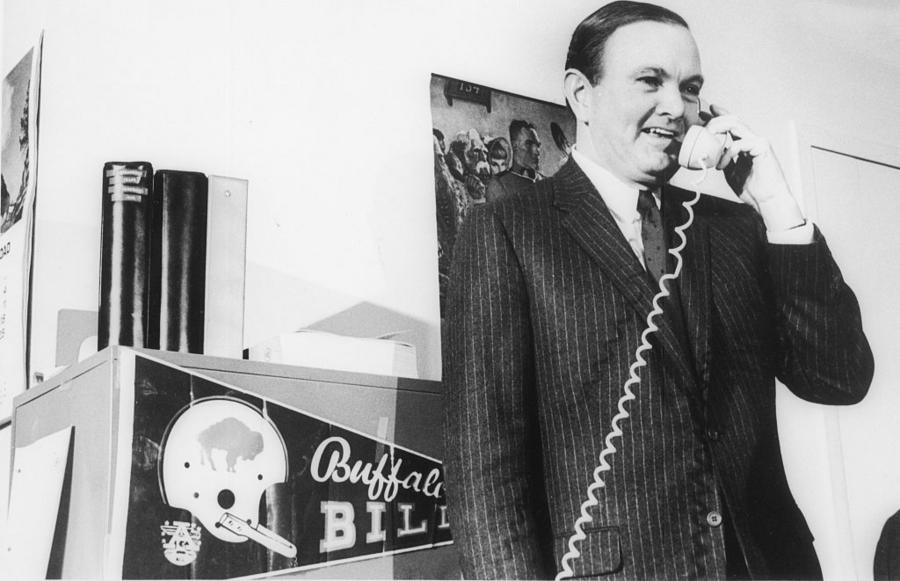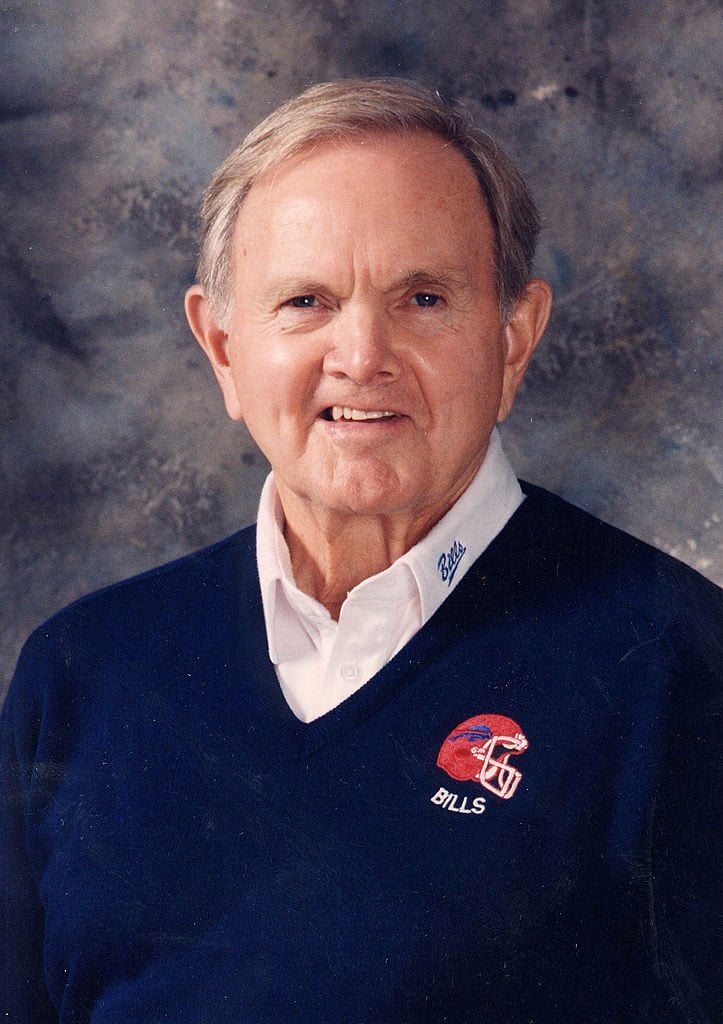Longtime Buffalo Bills owner Ralph Wilson passed away in March 2014 at the age of 95. At the time of his death, Wilson was the oldest team owner in the NFL and the second-longest tenured in league history. Only George Halas, who owned the Chicago Bears for 63 years, had a longer run. Wilson had owned the Bills for 54 years, having founded the team as part of the upstart American Football League in 1959.
Even though he didn't have any children, most people assumed they knew what would happen next. Either the team would be passed down to various members of his extended family, who would keep the team in their clutches for another 50-100 years. OR his estate would sell the team, generating a one-time massive windfall for those same lucky heirs.
As it turned out, the team did indeed go up for sale in late 2014. But what happened next was something no one expected.
From Naval Officer To NFL Visionary
Born on October 17, 1918, in Columbus, Ohio, Ralph Wilson moved with his family to Detroit as a child. He studied at the University of Virginia and the University of Michigan Law School before enlisting in the Navy during World War II. Wilson served in both the European and Pacific theaters.
After the war, he returned to Detroit and took over his father's modest insurance business. But Wilson's ambitions stretched far beyond underwriting policies. Through his company, Ralph Wilson Enterprises, he expanded into trucking, construction, manufacturing, and broadcasting. He even became a minority owner of the Detroit Lions—his first taste of the NFL.
The Founding Of The Buffalo Bills
In the late 1950s, when plans emerged to launch a rival league to the NFL, Wilson was intrigued. After a failed attempt to place a team in Miami, he pivoted to Buffalo, and the Bills were born.
The early days of the AFL were financially shaky, and Wilson played a vital role in keeping the league afloat. He lent money to fellow owners, including a $400,000 loan to Al Davis to save the Oakland Raiders. Thanks to Wilson and others, the AFL stabilized and eventually merged with the NFL in 1970.
Under Wilson's ownership, the Bills captured two AFL Championships. After the merger, they won four AFC titles in the early 1990s, though they infamously lost all four Super Bowl appearances.
The photo below shows Ralph on January 29, 1969. He's smiling as he informs NFL commissioner Pete Rozelle that with the first pick of the first round of the 1969 AFL-NFL Common Draft, the Buffalo Bills selected… O.J. Simpson.

(Via Getty)
A Life Beyond Football
Wilson spent most of his adult life in Grosse Pointe, Michigan, with his wife Mary McLean. He was an avid art collector, with a private collection that included works by Manet, Monet, and Sisley, worth tens of millions of dollars. He also owned successful Thoroughbred racehorses, including winners of the Santa Anita Derby and the Breeders' Cup Juvenile.
Selling The Bills
Following Wilson's death in March 2014, his estate announced plans to sell the Buffalo Bills. In September of that year, the team was sold for $1.4 billion to a group led by billionaire Terry Pegula and his wife, Kim Pegula, who already owned the NHL's Buffalo Sabres. The Pegula offer outbid efforts led by Donald Trump and Jon Bon Jovi.

Ralph Wilson / NFL via Getty Images
An Incredible Surprise For Buffalo And Detroit
Just when it seemed like Wilson's story had come to a close, his estate revealed one final twist: the majority of the $1.4 billion from the sale would not be going to heirs. Instead, it was earmarked for the Ralph C. Wilson Jr. Foundation.
Two trust funds—each reportedly worth hundreds of millions—were established to benefit Wilson's two most beloved cities: Buffalo and Detroit. While the exact dollar figures weren't initially disclosed, insiders reported that the gifts dwarfed existing private foundations in both regions. For example, Buffalo's John R. Oishei Foundation, long the area's largest, held about $300 million at the time.
A Lasting Legacy
Ralph Wilson didn't just build a football franchise—he built a legacy of generosity and vision. His foundation has since become one of the largest in the country, focused on health care, youth development, and economic revitalization.
And perhaps the most remarkable part? Wilson never sought the spotlight. He simply built, funded, and gave—quietly and intentionally.
/2014/10/khan.jpg)
/2017/10/GettyImages-848528002.jpg)
/2012/08/GettyImages-856299308.jpg)
/2015/09/kim2.jpg)
/2015/08/GettyImages-455865148.jpg)
/2011/11/jim.jpg)
/2009/09/Brad-Pitt.jpg)
/2019/10/denzel-washington-1.jpg)
/2020/04/Megan-Fox.jpg)
/2020/01/lopez3.jpg)
/2009/09/Jennifer-Aniston.jpg)
/2009/11/George-Clooney.jpg)
/2020/06/taylor.png)
/2019/04/rr.jpg)
/2009/09/Cristiano-Ronaldo.jpg)
/2020/02/Angelina-Jolie.png)
:strip_exif()/2009/09/P-Diddy.jpg)
:strip_exif()/2015/09/GettyImages-476575299.jpg)
/2019/11/GettyImages-1094653148.jpg)
/2018/03/GettyImages-821622848.jpg)
/2017/02/GettyImages-528215436.jpg)